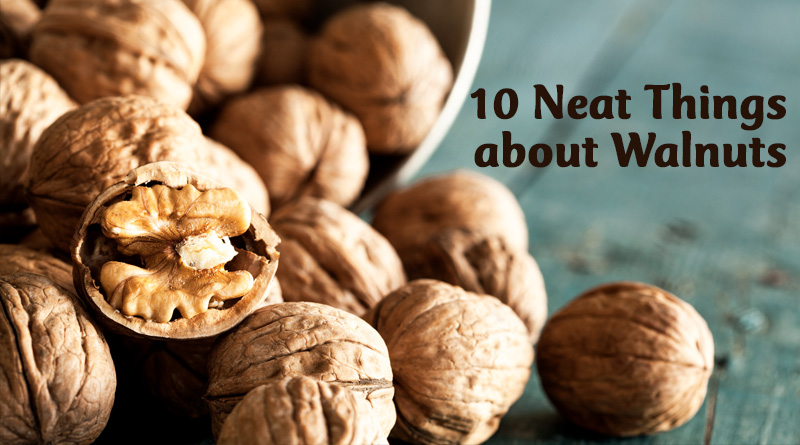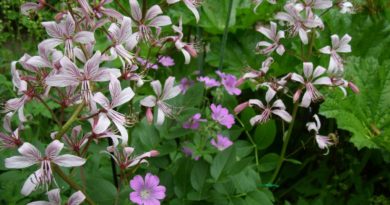About Walnuts
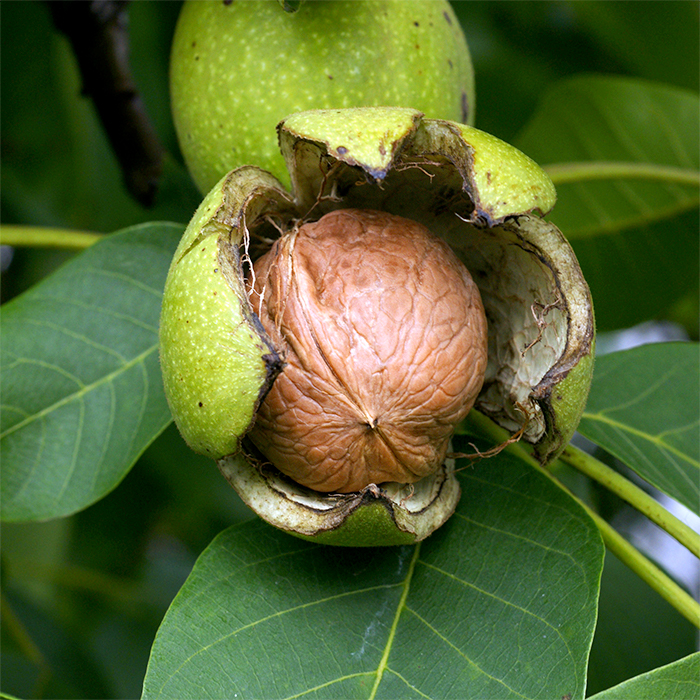
1. Native or Persian?
The walnuts you put in cookies and pies are probably Persian, or Juglans regia, also known as English. But there are also types that are native to North America. The black walnut (J. nigra) and white walnut or butternut (J. cinera) occur naturally in Eastern Canada. They are hardy to Zone 3a. Both native types are edible, but they’re difficult to access inside their shells.
2. Killer tree.
Walnuts (and some of their relatives) produce a chemical called juglone, which interferes with the respiratory system of some plants. While most of this toxic material is contained in the tree’s roots, it can also be found in leaves and twigs. The noxious substance extends 50 to 80 feet beyond the drip line of the tree and stays in the earth for some time even after the offending tree has been removed.
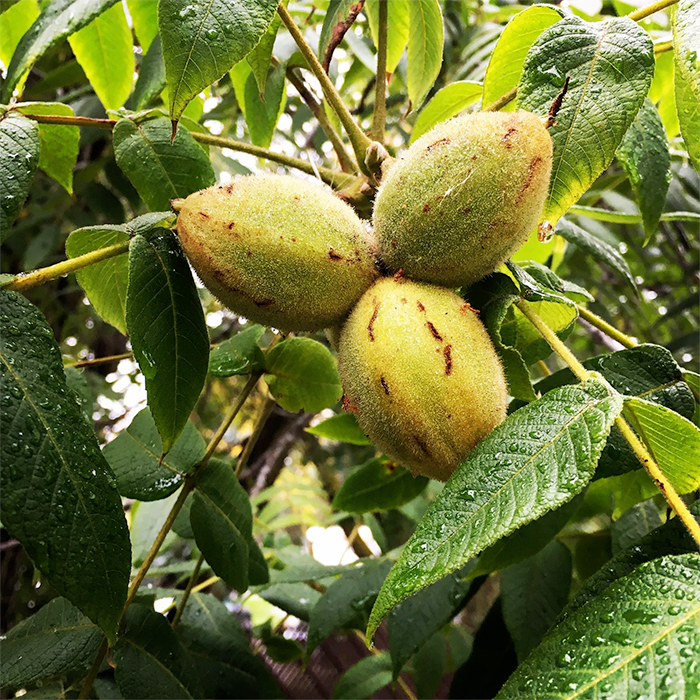
3. Tree killer.
Butternuts are in decline owing to a deadly canker. It seems to have been imported from Japanese stock at the beginning of the 20th century, but butternut is the only host. It is spread by water, insects and animals, so isolating a butternut isn’t a good method of prevention.
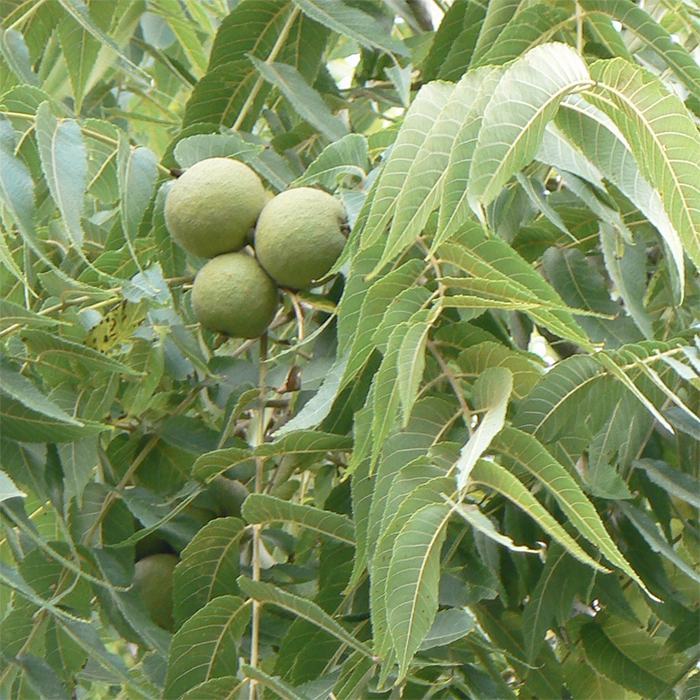
4. Why plant walnuts?
If you garden on a small city lot, then walnuts are the last plant I would recommend. Black walnuts grow to massive widths, easily spreading their low, 10-foot-off-the-ground branches 60 to 70 feet and, in most places, grow just as tall. You need a huge tract of land for that kind of mass. Having said that, they are pretty with their bright, almost lime-green, feathery pinnate leaves, and they make wonderful shade trees. Their fruits look a little like suspended tennis balls. The trees don’t start producing nuts until about 10 years old and don’t really produce heavily until they reach 30.
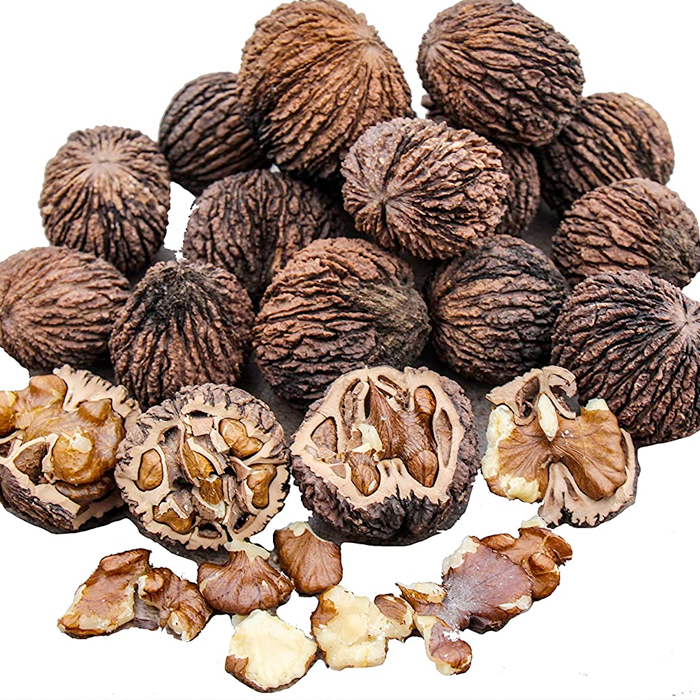
5. Getting the nut.
As mentioned, it’s hard to get at the meat of a black walnut. Firstly, the nuggets are protected by a thick husk that should be removed when it is still green to ensure a tastier nut. It’s also easier to remove the husk then. Even so, removing the husks is a messy and difficult task; be prepared to have everything you use stained. Next, the inner nuts need to be cured until their hard outer shell dries. Last, if you’ve shelled Persian walnuts? Black walnuts are even more difficult.
6. The taste.
Black walnuts are like Persians on steroids, with earthy, smokey overtones. They are not great for eating out of hand but go better in baked goods or high-end food.
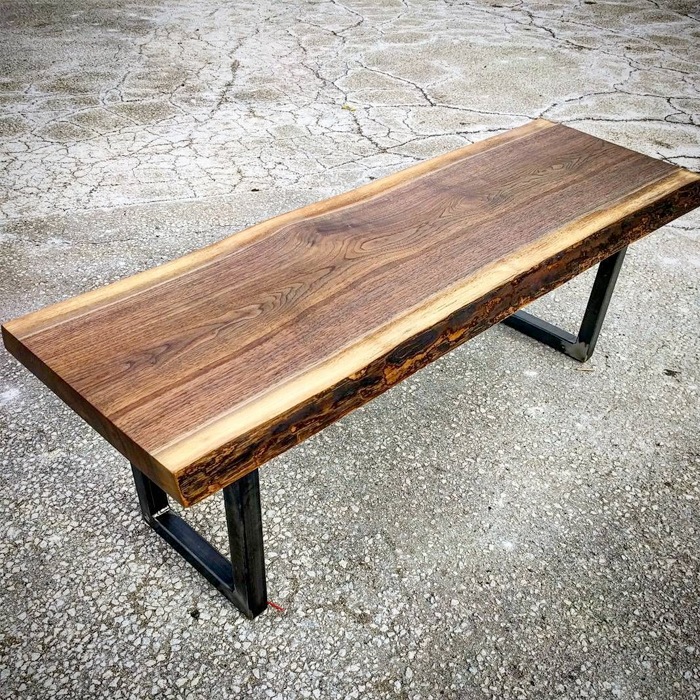
7. The wood.
Black walnuts are highly prized for their wood, which is just a little less dense than that of oak. It is used for gun stocks, for paddles and for coffins. In 2004, DNA evidence was used to convict a walnut poacher who had stolen a tree worth about $2,500.

8. To dye for?
All sorts of walnuts have been used to make dye and ink. In ancient times, Romani criminals would have their hands stained with the stuff, which was (almost) permanent. Leonardo da Vinci used Persian walnuts for ink in his drawings. Since black walnuts have been discovered by Europeans, they’ve been used too, providing darker colours.
9. Horses and dogs.
Horses can get a condition called laminitis, an inflammation of the feet, if their bedding is made from walnut chips or sawdust. And walnuts are lethal to dogs. As for people, don’t eat a walnut with a mouldy shell, because poisonous mycotoxins can leak into the meat.
10. Not a nut.
Seriously? Yes. A walnut is not a nut in the botanical sense because its hard outer shell is composed of two distinct halves. Acorns, hazelnuts and chestnuts are nuts; walnuts, almonds and pecans are not.
– Dorothy and Shauna Dobbie Copyright©
Pegasus Publications Inc.

